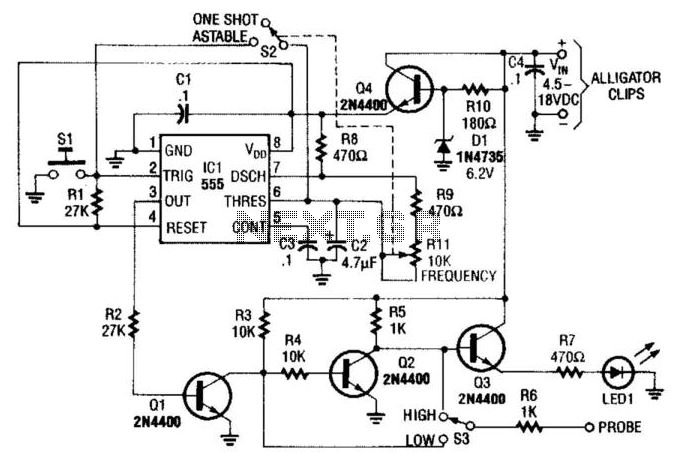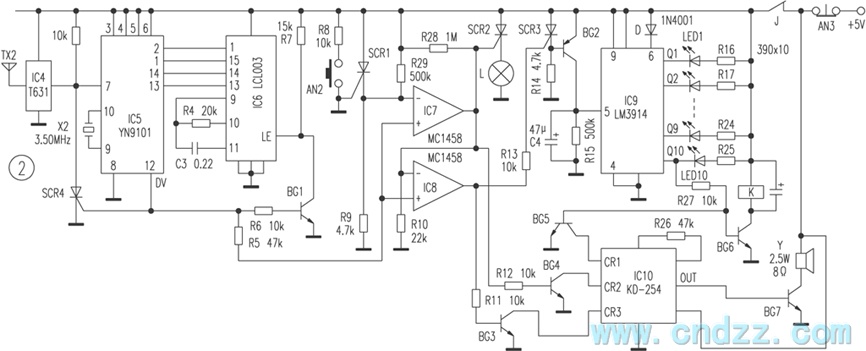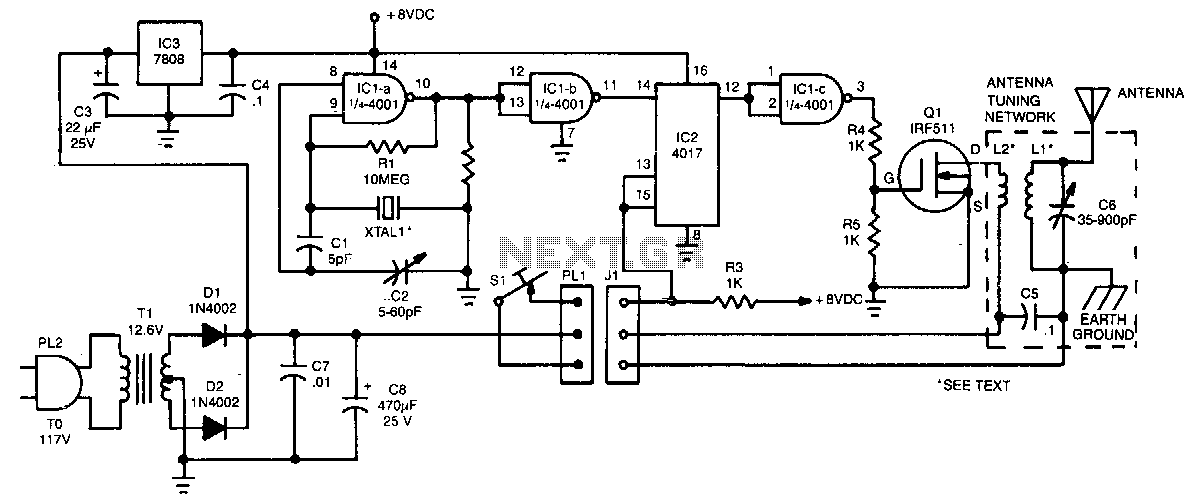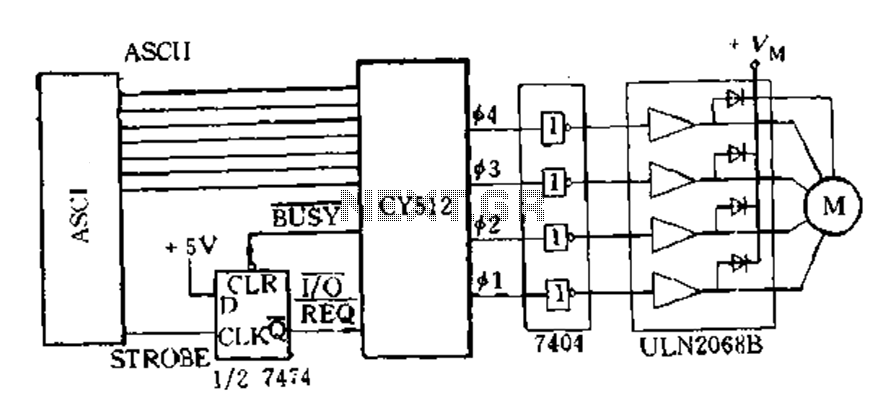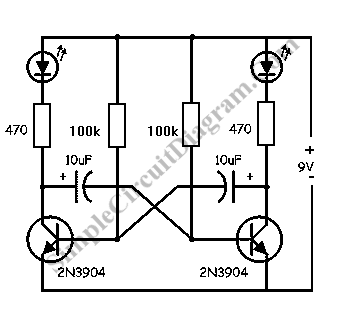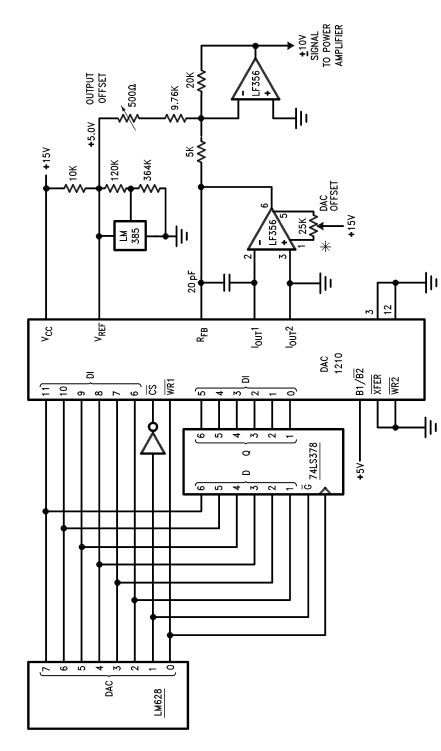
High Frequency Function Generator Using MAX038
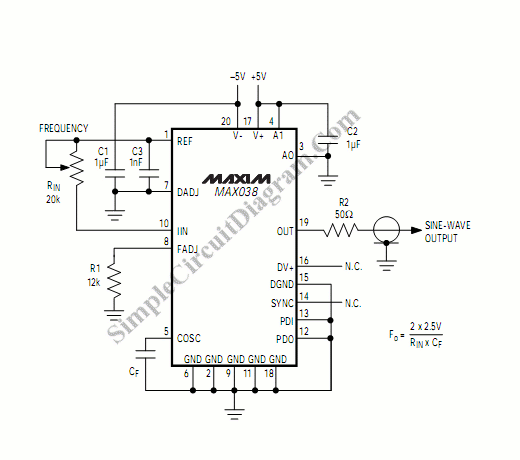
A function generator that operates within a frequency range of 0.1 Hz to 20 MHz can be easily constructed using the MAX038 integrated circuit chip. This describes a straightforward implementation of the device.
The MAX038 is a precision waveform generator that can produce sine, square, triangular, and sawtooth waveforms with high accuracy and stability. The device features a wide frequency range, making it suitable for various applications such as signal generation for testing and simulation in electronic circuits.
To construct a basic function generator using the MAX038, the following components and connections are typically involved:
1. **Power Supply:** The MAX038 requires a dual power supply, usually ±5V to ±15V, to operate correctly. Proper decoupling capacitors should be placed close to the power pins to minimize noise and ensure stable operation.
2. **Frequency Control:** The frequency of the output waveform can be adjusted using external resistors and capacitors connected to the timing pins of the MAX038. The frequency is determined by the formula provided in the datasheet, which relates the external components to the internal timing circuitry.
3. **Waveform Selection:** The MAX038 has pins dedicated to selecting the type of waveform output. By configuring these pins with appropriate logic levels (high or low), the desired waveform can be generated.
4. **Output Stage:** The output signal can be taken from the output pin of the MAX038. It is advisable to buffer this output with an operational amplifier if higher drive capability is needed or if the load impedance is low.
5. **Additional Features:** Optional components such as variable resistors (potentiometers) can be added for fine-tuning frequency adjustments. Filters may also be implemented to smooth out the output waveform, especially for sine wave generation.
The simplicity of the MAX038 implementation allows for quick prototyping and testing of various waveforms, making it a valuable tool for electronics engineers and hobbyists alike. By following the guidelines provided in the device's datasheet, a reliable and versatile function generator can be realized with minimal effort.Function generator ranging from 0.1 Hz to 20 MHz can be easily built using MAX038 integrated circuit chip. Here is the most simple implementation of high . 🔗 External reference
The MAX038 is a precision waveform generator that can produce sine, square, triangular, and sawtooth waveforms with high accuracy and stability. The device features a wide frequency range, making it suitable for various applications such as signal generation for testing and simulation in electronic circuits.
To construct a basic function generator using the MAX038, the following components and connections are typically involved:
1. **Power Supply:** The MAX038 requires a dual power supply, usually ±5V to ±15V, to operate correctly. Proper decoupling capacitors should be placed close to the power pins to minimize noise and ensure stable operation.
2. **Frequency Control:** The frequency of the output waveform can be adjusted using external resistors and capacitors connected to the timing pins of the MAX038. The frequency is determined by the formula provided in the datasheet, which relates the external components to the internal timing circuitry.
3. **Waveform Selection:** The MAX038 has pins dedicated to selecting the type of waveform output. By configuring these pins with appropriate logic levels (high or low), the desired waveform can be generated.
4. **Output Stage:** The output signal can be taken from the output pin of the MAX038. It is advisable to buffer this output with an operational amplifier if higher drive capability is needed or if the load impedance is low.
5. **Additional Features:** Optional components such as variable resistors (potentiometers) can be added for fine-tuning frequency adjustments. Filters may also be implemented to smooth out the output waveform, especially for sine wave generation.
The simplicity of the MAX038 implementation allows for quick prototyping and testing of various waveforms, making it a valuable tool for electronics engineers and hobbyists alike. By following the guidelines provided in the device's datasheet, a reliable and versatile function generator can be realized with minimal effort.Function generator ranging from 0.1 Hz to 20 MHz can be easily built using MAX038 integrated circuit chip. Here is the most simple implementation of high . 🔗 External reference
